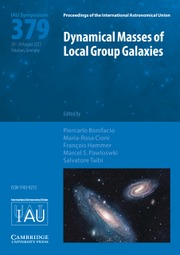Article contents
Structure and evolution of W UMa-type systems
Published online by Cambridge University Press: 01 April 2008
Abstract
We summarize and discuss our recent works on the structure and evolution of low-mass W UMa-type contact binary stars. Three conclusions are given as followings: (1) The energy transfer is taken place in the radiative region of common envelope of W UMa systems; (2) The magnetic activity level of W UMa systems is weaker than that of non-contact binaries or rapid-rotating single stars; (3) The evolutionary outcome of W UMa systems might be the rapid-rotating single stars, and an average lifetime is derived to be about 7 Gyr for W UMa systems.
- Type
- Contributed Papers
- Information
- Proceedings of the International Astronomical Union , Volume 4 , Symposium S252: The Art of Modeling Stars in the 21st Century , April 2008 , pp. 423 - 424
- Copyright
- Copyright © International Astronomical Union 2008
References
- 1
- Cited by




